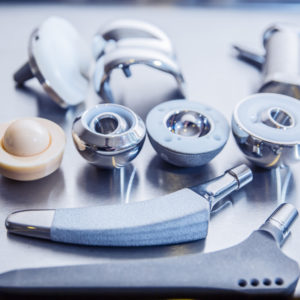Lawsuits Over DePuy Pinnacle Hips Approaching First Trials in Sept.

Trial dates are set to begin in less than two months for DePuy Pinnacle hip replacement lawsuits, which will serve as “bellwethers” for thousands of similar claims brought by individuals nationwide who have experienced problems with the metal-on-metal implant.
There are currently about 6,400 product liability lawsuits filed throughout the federal court system involving the DePuy Pinnacle hip, which have been consolidated for pretrial proceedings before U.S. District Judge Ed Kinkeade in the Northern District of Texas, as part of an MDL, or multidistrict litigation.
During the coordinated litigation, a small group of cases have been prepared for early trial dates, known as “bellwether” lawsuits, which are designed to help the parties gauge how juries are likely to respond to certain evidence and testimony that may be repeated throughout a large number of cases.

Learn More About
Lawsuits are being reviewed for several different dangerous and defective hip replacement systems.
Learn More About this Lawsuit SEE IF YOU QUALIFY FOR COMPENSATIONOn September 1, 2014, the first trial in the MDL is scheduled to begin, involving complaints filed by Kathleen Herlihy-Paoli and Toni M. Lay. These bellwether cases will be followed by three more scheduled to begin on November 3, 2014, and another three set to begin on January 12, 2015.
DePuy Pinnacle Bellwether Trials
All of the complaints involve similar allegations that DePuy sold a defective and unreasonably dangerous implant, which was prone to fail within a few years. The DePuy Pinnacle hips at issue in the litigation involve metal-on-metal designs, where a metal femoral head rotates within a metal acetabular cup.
Although hip replacements are typically expected to last 15 to 20 years, plaintiffs claim that the causes a release of microscopic metal debris as the parts rub against each other, resulting in a risk of loosening and failure within a few years.
Herlihy-Paoli received a DePuy Pinnacle hip implants in 2009, and alleges that she soon began to experience severe pain. Her orthopedic surgeon determined that “implants were leaching dangerous levels of cobalt and chromium into her blood stream and that she required a revision surgery,” according to her complaint. When the left hip was removed on April 26, 2011, Herlihy-Paoli’s surgeon determined that the Pinnacle implant had failed and had turned black due to metallosis, a form of metal blood poisoning that has been linked to metal-on-metal hip replacement systems.
Lay received her DePuy Pinnacle in September 2006, for her right hip, and then received another in her left hip in April 2007. In June 2010, her doctor detected high levels of cobalt and chromium in her blood, according to the complaint. Further diagnostics found fluid consistent with metallosis around her left hip. It was later determined that the hip had failed, sending cobalt and chromium debris into her body. In addition to a space filled with whitish-green fluid, the surgeon found significant soft tissue death in the area.
While the outcomes of these early trial dates are not binding in other claims, they may facilitate negotiations to settle DePuy Pinnacle cases without the need to remand thousands of cases back to U.S. District Courts nationwide for individual trial dates.
Metal-on-Metal Hip Problems
The metal-on-metal configuration of the DePuy Pinnacle hip was used as the basis for the approval of the controversial DePuy ASR hip implant in 2005, with the Johnson & Johnson subsidiary obtaining “fast track” 510k approval by maintaining that the DePuy ASR and DePuy Pinnacle metal-on-metal hips feature “substantially similar” designs.
A DePuy ASR recall was issued in August 2010, after the manufacturer acknowledged that the implant carried a higher-than-expected rate of failures. Johnson & Johnson recently agreed to pay more than $2.4 billion to settle DePuy ASR lawsuits filed on behalf of about 12,000 people who received the implants. However, the manufacturer has indicated that it intends to defend against the lawsuits over DePuy Pinnacle hips.
Other manufacturers of metal-on-metal implants face similar allegations that they failed to adequately research the design or warn about the risk of problems. Additional MDLs have been established in the federal court system for Biomet M2A Magnum metal hip lawsuits and Wright Medical Conserve Cup metal hip lawsuits.
In January 2013, the FDA released new guidance for metal-on-metal hip replacements, indicating that doctors should only use the design if other artificial hip implants are not appropriate. The agency also determined that future metal-on-metal hip designs will be required to undergo extensive human clinical trials before they will be approved.
Get more articles like this sent directly to your inbox.
"*" indicates required fields






0 Comments